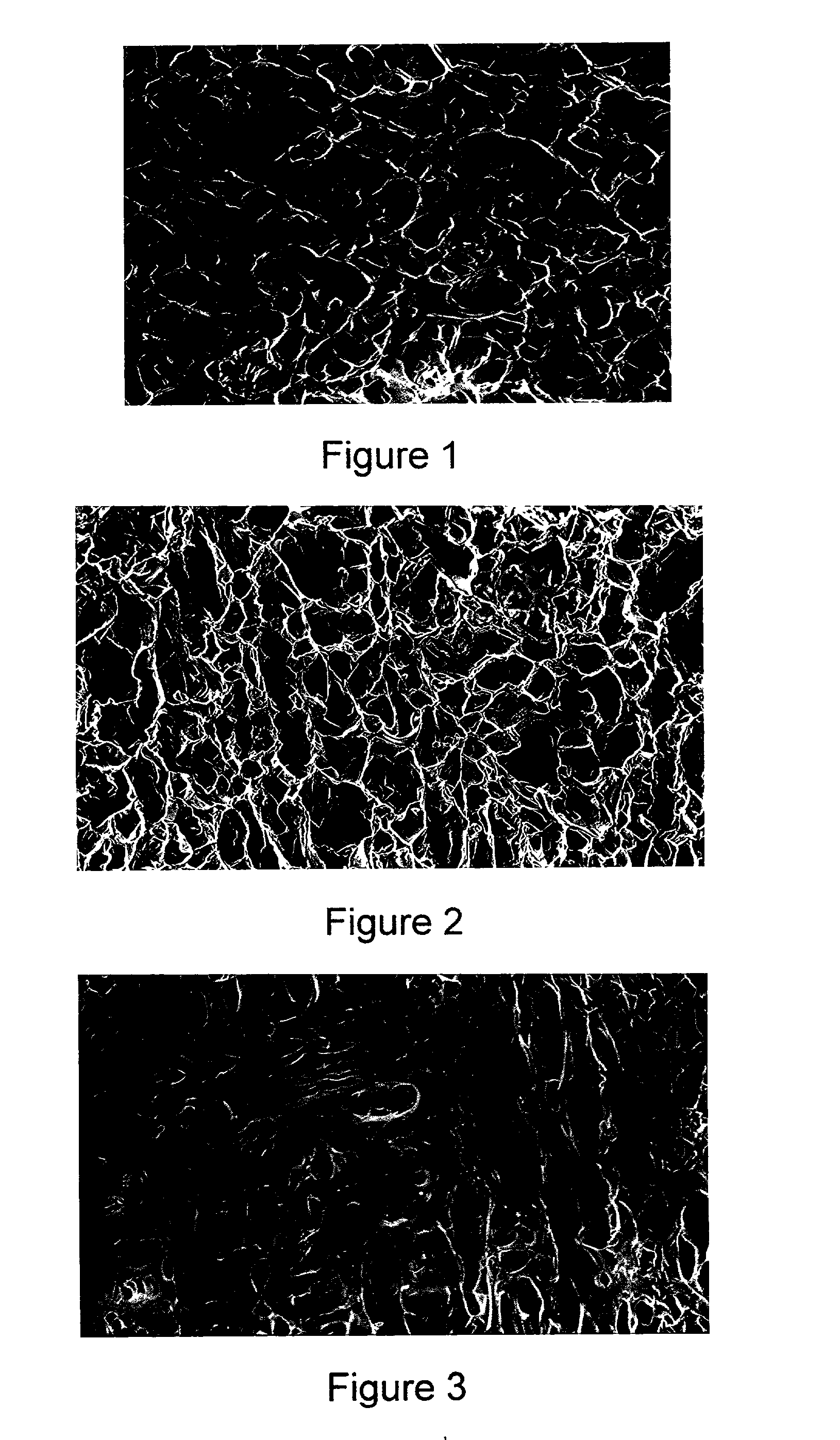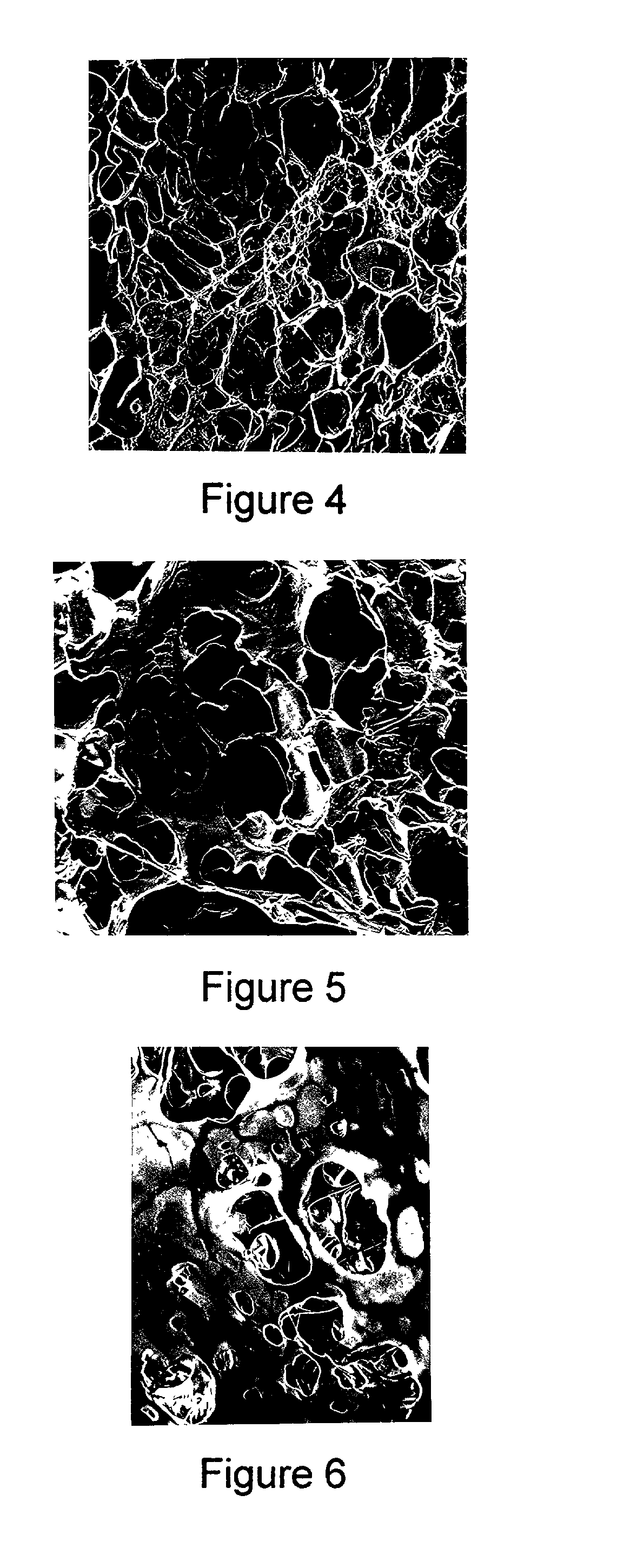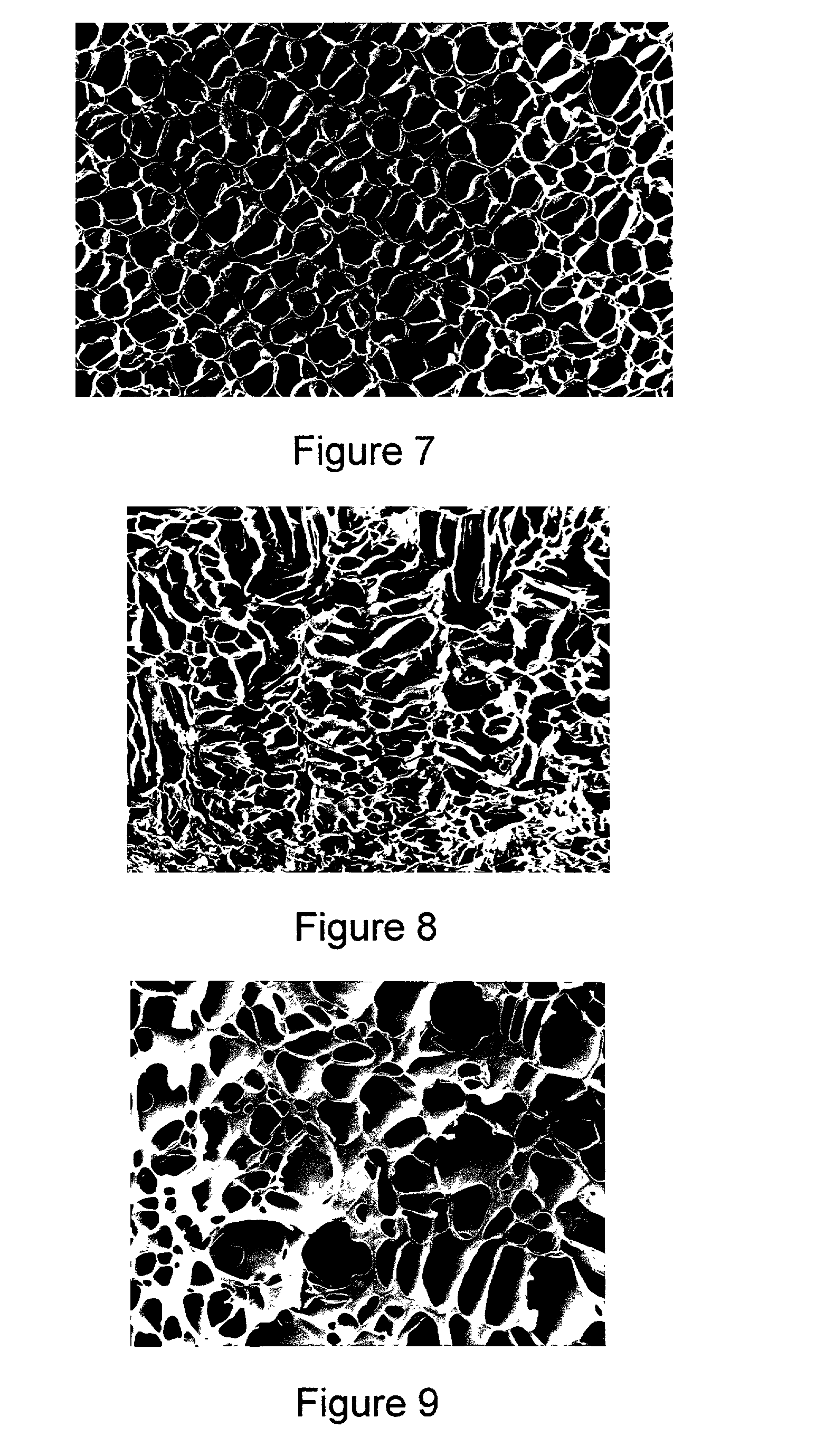Method for making a porous Polymeric material
a technology of porous polymer and polymer, which is applied in the direction of prosthesis, rigid container, pipe laying and repair, etc., can solve the problems of high failure rate when infection occurs, increased failure rate with decreasing caliber of blood vessel substitute, and aneurysm formation
- Summary
- Abstract
- Description
- Claims
- Application Information
AI Technical Summary
Problems solved by technology
Method used
Image
Examples
example
[0084] A siloxane-based macrodiol, aromatic polyurethane, supplied by Aortech Biomaterials, was selected for this example.
[0085] 1) The manufacturer identified dimethyl acetimide, n-methyl pyrrolidinone, and tetrahydrofuran as solvents for the polymer.
[0086] 2) A 0.25-gram sample of polymer was placed into the bottom of 20 small bottles. Five milliliters of 20 common laboratory solvents, including the three listed by the manufacturer, was added to the bottles. The bottles were left for 48 hours at room temperature after which they were used to identify those solvents that dissolved or resulted in swelling of the polymer. Twelve polymers were identified and are listed below along with freezing point ("F.P.", also known as melt point), boiling point ("B.P."), vapor pressure ("V.P."), and solvent group (S.G.). (Other properties that can aid in the selection of solvent and gelling solvent include, but are not limited to, density, molecular weight, refractive index, dielectric constant, ...
PUM
| Property | Measurement | Unit |
|---|---|---|
| Volume | aaaaa | aaaaa |
| Pore | aaaaa | aaaaa |
| Biodegradability | aaaaa | aaaaa |
Abstract
Description
Claims
Application Information
 Login to View More
Login to View More - R&D
- Intellectual Property
- Life Sciences
- Materials
- Tech Scout
- Unparalleled Data Quality
- Higher Quality Content
- 60% Fewer Hallucinations
Browse by: Latest US Patents, China's latest patents, Technical Efficacy Thesaurus, Application Domain, Technology Topic, Popular Technical Reports.
© 2025 PatSnap. All rights reserved.Legal|Privacy policy|Modern Slavery Act Transparency Statement|Sitemap|About US| Contact US: help@patsnap.com



